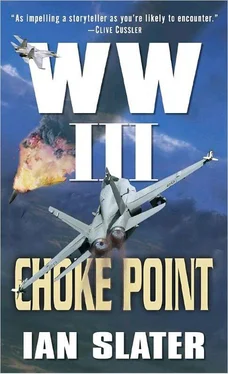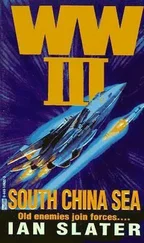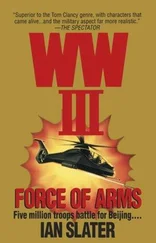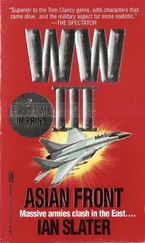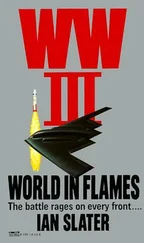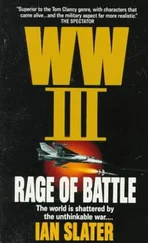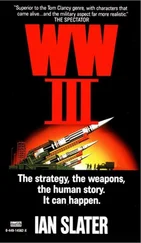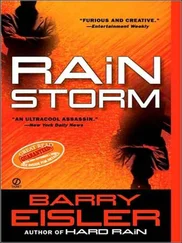“No,” said Frank. “Not till we get that water sample for Freeman. That could be crucial.”
“To whom?” the mate snapped. “Freeman. That guy’s just like Patton an’ all those other glory hounds. They only care about—”
“Calm down!” Hall said, just as sharply. “The water sample could save a lot more lives than those lost on that ferry. If we don’t find an international isotope fingerprint in this slick, it means that the oil’s an outside batch and belongs to some vessel that doesn’t want to be identified. Like a midget sub. Got it?”
“Sorry, Captain.”
“No need. You’re tired. We all are. Go down to the galley, grab a cup of java, take a breather and—”
Frank stopped talking and cut the Petrel ’s engines. She was in the slick, and from the starboard fold-out platform just big enough for a man to stand on, he saw his bosun hook up the safety chain rail and raise his right hand, moving it in a clockwise circular movement, the signal for the winch man to start lowering the fifty-pound, quarter-inch cable through the block above the platform. Frank heard the whine of the winch, saw the lead weight penetrate the sea’s choppy surface and the bosun give the stop signal as he reached out from the platform and affixed the Neilsen reversing sample “bottle” to the wire. Satisfied that the bottom wing nut clamp was secure on the cable, the bosun next attached the grenade-sized brass messenger, a sleeve weight that, once struck by another messenger sent down the wire, would trigger the sudden upside down flip of the sampling bottle, breaking the mercury column on its side-mounted thermometer and thus preserving the exact temperature reading at that depth. Albinski had had such a thermometer on his attack board.
The bosun gave the “Take her down slowly” signal, and the Neilsen bottle was lowered under the oil slick. There was a heavy thud, felt by Cookie in the kitchen, as the winch man braked. The bosun fixed the trigger messenger to the wire, let it fall down the cable, heard the clack of the impact and saw oily black bubbles fizzing to the surface only seconds after the bottle had tripped. “Bring her up!” he shouted to the winch man, who couldn’t hear him but followed the “Up! Up! Up!” motion of the bosun’s hand. As the bosun unclipped the bottle, he almost lost his grip on the bottle’s oil-slicked casing.
Only then did Frank Hall turn Petrel about and head at full speed northward to assist in yet another forlorn rescue task, this time around the sunken ferry. One of the Coast Guard ships would be able to do a preliminary isotope “presence” test. If there was no isotope match-up, it was almost certain that they’d zoned in on the sub’s area, and the Juan de Fuca tide flow charts would allow Freeman’s SpecFor team to backtrack to where the spill had started.
Moving briskly down the carrier’s six steep, grated aluminum ladder wells that led from the CNN McCain ’s island to the gallery deck, immediately below the carrier’s flight deck, Admiral Crowley walked quickly forward through the quarter-mile-long cream-colored corridor. The six thousand crew members referred to it as the “steeple chase,” due to the scores of oval-shaped and watertight doors that had to be passed through at some risk to knees — if you were short, like Crowley — or your head — if, like Petty Officer Sarah Dugan, you were among the taller crew members.
Turning at right angles to the main axis of the boat, Crowley entered a cross passageway that took him farther inboard. Crew with photo IDs clipped to their uniforms turned aside to allow the admiral to pass, for despite the enormous size of America’s largest ship, her corridors were relatively narrow. Every inch of available space was needed to house the millions of pieces of equipment needed for McCain to carry out its mission: to transport America’s big stick into the Taiwan Strait to contain the war between China and the ROC before the conflict widened in Asia and drew the already overextended U.S. military into what the Pentagon told the President would be a “logistical abyss.”
Crowley, now approaching the nerve center of the 96,000-ton carrier, was leaving the gray area of the ship and entering what the crew called “blue tile country,” which housed the highly sensitive data-linked command and control functions of the carrier. These included the Combat Information Center, where Crowley was now headed, the Joint Intelligence Center, and the ultrasecret SSES, the secret signals exploitation space, a highly sophisticated electronic snooping and worldwide computer spy shop that could provide the captain with links to all U.S. intelligence agencies and infrared satellite surveillance of enemy movements on the ground. All the information collected in this relatively small but securely guarded unit could be linked to the big screens and consoles in the other four independently housed command and control units. All these units were bathed in a perpetual cool blue light — hence the nickname “blue tile country”—the temperature kept low in order to keep the banks of computers and electronic equipment from overheating in their high intensity 24/7 operation.
The moment Crowley entered the Combat Information Center, he reached for his well-worn lamb’s-wool-lined World War II bomber jacket and zipped it up to the neck. “What’ve we got?” he asked the CIC duty officer, John Cuso, whose calm expression, made faintly ghoulish in the cool, bluish light, concealed his concern. His tone was thoroughly professional, worthy of the aviator’s code he still lived by, despite having been permanently grounded after a burst blood vessel during a basketball game that had ended his days in his beloved Tomcat.
Cuso drew Crowley’s attention to the big blue situation board, its surface crisscrossed with vectors and blips, showing the position of McCain ’s present combat patrol, the carrier group now leaving the northernmost waters of the South China Sea, passing into the southernmost limits of the Taiwan Straits. Cuso pointed to the biggest blip on the screen. It was coming in from the northeast. “Sir, this typhoon out of Japan is picking up speed. Lost some energy during landfall over Japan, but on encountering less friction over the Sea of Japan, its winds have increased to 120 miles an hour. By the time we enter the Taiwan Strait—”
“Air’s gonna be full of all kinds of junk,” interjected Crowley.
“Yes, sir. It’ll be like a giant vacuum cleaner if it passes over Taiwan. And we’re in late fall — end of the harvest in the fields on the western side of the island’ll mean all kinds of debris.”
“Plus the damn fires our satellites show over Quemoy.”
“Kinmen,” Cuso corrected his boss. Crowley was old school, had flown Skyraider infantry support in Vietnam and, like others of his generation, the old Chinese names stuck. Cuso didn’t like correcting him, but some terrible mistakes had been made on bombing missions by getting the names mixed up. The one the instructors had always used as a warning at the flight school was Bangor, Maine, and Bangor, Washington State.
“Then we’ll have to make sure everyone in the air wing knows,” said Crowley, “emphasis ’Brown Shirts,’ “ by which Crowley meant plane captains, not the brown jerseyed helo captains who wore the same color but sported red helmets to differentiate them from the white-helmeted plane captains whose job it was to be “mother” to his or her particular aircraft.
In fact, John Cuso, the black sheen of his skin speckled by goose bumps from the chilly atmosphere of the CIC, had posted a “dirty air” alert. It meant that flight deck personnel were to be particularly vigilant for foreign object debris on the walkdown of the flight deck that preceded every launch. All the personnel’s eyes, as well, had to be protected by goggles. And the 1,092-foot-long, 250-foot-wide rubberized, nonskid deck was to be closely inspected for anything, no matter how small, which would quickly destroy a multimillion-dollar jet engine if sucked into its intake.
Читать дальше
